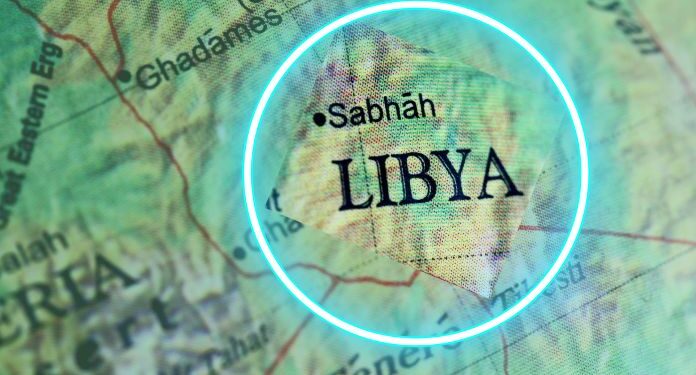Libya is a country that prides itself on its cultural heritage, desert landscapes, ancient Greek and Roman ruins, and more than seven UNESCO World Heritage Sites. This is already interesting, but it is just a slice of the country with one of the strongest currencies in Africa.
Here are 10 other great facts to know about the country.
10 Facts About Libya
1. The Country has been Inhabited Since 1200 BC
Several recordings have shown that the Berbers, also known as Amazigh, inhabited Libya since 1200 BC. These people live in the country and make up about 5% of the population.
With this, Libya is one of the oldest countries in Africa.
2. Libya was Once a Center of Christianity
It is a common fact that Libya is more than 90% Sunni Muslims. However, this has not always been the case in the country. In ancient times, Libya was a center of Christianity.
In fact, St. Mark who wrote the Gospel of Mark in the Christian Bible had ties with the country. He was born in Cyrene, Libya.
Moreso, Simon of Cyrene who helped Jesus to carry his cross was from Cyrene, an archeological town in Libya.
So, how did the story change? In 700 AD, the Arabs invaded the country and spread Islam. Currently, there are only a few Christians in Libya.
3. It has the Largest Man-Made River and Water Transportation Project
The Great Man-Made River is the largest irrigation projection in the world and it was created by the Libyan Government during the Gaddafi Administration.
The water covers a distance of up to 1,600 kilometers and provides about 70% of all freshwater that the country uses.
4. Libya has the Second Strongest Currency in Africa
After the Tunisian Dinar, the Libyan Dinar is the strongest currency in Africa. A US Dollar is Libya’s currency in 4.79.
The strength of the currency has suffered over time due to the instability of the economy which is mostly related to the crisis that the country faces.
The Libyan Dinar grew as a result of the flood of dollars into Libya. Also, the strict monetary policies in the country may have contributed to making the country’s currency as strong as it is.
5. It Was Once Considered One of the Wealthiest Countries on Earth
Before the presence of wars and political uncertainties that led to the economic breakdown of Libya, the country was once named one of the richest countries in the world.
In the 1980s, Libya’s GDP per capita was even greater than some developed countries today.
Although this GDP may have fallen over time, it still has one of the highest. Yet, it has not surpassed countries such as Mauritius, Seychelles, Gabon, and South Africa.
6. It is Known for its Crisis Problems
Back in 2011, there were Arab Spring protests that started on the low before it became a serious political-military instability in Libya.
It has soon become a civil war, and foreign military intervention and also led to the killing of the country’s leader, Muammar Gaddafi. It has also lasted over a decade and caused the death of thousands of people. It also landed the country on the list of the most dangerous to visit.
Moreso, Libya lost its place as one of Africa’s countries with the highest Human Development Index (HDI).
See Also: First African Country To Gain Independence: How Others Followed
7. It Has the Largest Proven Oil Reserves in Africa
Libya remains one of the largest oil-producing countries in the world. In Africa, it has the largest proven oil reserves with over 48,300 million barrels of petroleum crude oil reserves.
The country also has about 1,505 proven natural gas reserves. This makes Africa’s biggest oil-producing countries such as Nigeria and Algeria come after it.
Other natural resources found in the country are natural gas and gypsum.
8. Libya is one of the Hottest Countries in the World
With the relative lack of moisture and less evaporation, the deserts that surround Libya contribute to how high the country’s temperature is.
On September 13, 1922, a community known as Aziziya recorded an air temperature of over 50°C. This then turns out to be one of the highest ever recorded in the world.
9. Libya was Once Part of an Ancient Greek Empire
The ancient city of Cyrene in Libya was a part of the ancient Greek Empire. It became one of the oldest and most important of the 5 Greek cities known as the pentapoleis.
The city was later incorporated into the ancient Roman Empire.
Currently, the city is a UNESCO World Heritage Site and it is found near Shahhat village. To date, it prides itself on the remains of the temple of Apollo, the temple of Demeter, and the partially excavated temple of Zeus.
10. It Had One of the Longest Serving Non-Monarch Leaders
The world still remembers Maumar Gaddafi. He became the de facto head of state in March 1979 at the age of 37 after a coup against a monarchical ruler, Idris I, the King of Libya.
At the time he came to power, Gaddafi became famous for the massive development of different sectors in Libya. However, he remained in power and Libya became one of the countries headed by a non-monarchical ruler for a very long time.
His tenure lasted about 32 years before he was killed on 20 October 2011 at the age of 72.




















